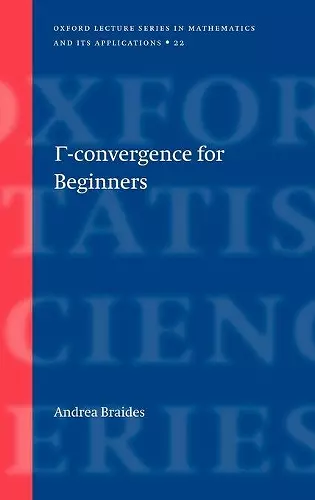Gamma-Convergence for Beginners
Format:Hardback
Publisher:Oxford University Press
Published:25th Jul '02
Currently unavailable, and unfortunately no date known when it will be back

The theory of Gamma-convergence is commonly recognized as an ideal and flexible tool for the description of the asymptotic behaviour of variational problems. Its applications range from the mathematical analysis of composites to the theory of phase transitions, from Image Processing to Fracture Mechanics. This text, written by an expert in the field, provides a brief and simple introduction to this subject, based on the treatment of a series of fundamental problems that illustrate the main features and techniques of Gamma-convergence and at the same time provide a stimulating starting point for further studies. The main part is set in a one-dimensional framework that highlights the main issues of Gamma-convergence without the burden of higher-dimensional technicalities. The text deals in sequence with increasingly complex problems, first treating integral functionals, then homogenisation, segmentation problems, phase transitions, free-discontinuity problems and their discrete and continuous approximation, making stimulating connections among those problems and with applications. The final part is devoted to an introduction to higher-dimensional problems, where more technical tools are usually needed, but the main techniques of Gamma-convergence illustrated in the previous section may be applied unchanged. The book and its structure originate from the author's experience in teaching courses on this subject to students at PhD level in all fields of Applied Analysis, and from the interaction with many specialists in Mechanics and Computer Vision, which have helped in making the text addressed also to a non-mathematical audience. The material of the book is almost self-contained, requiring only some basic notion of Measure Theory and Functional Analysis.
The presentation is overall quite clear, and the style is often captivating. Many figures, examples and exercises complete the monograph. Finally, it is worth adding a mention on the bibiography, which is at present a truly complete account of papers in this area. * Mathematical Reviews *
ISBN: 9780198507840
Dimensions: 237mm x 157mm x 12mm
Weight: 467g
230 pages